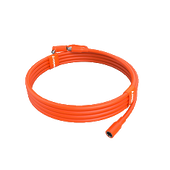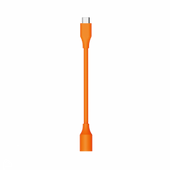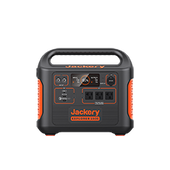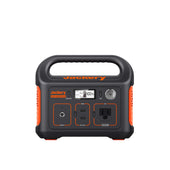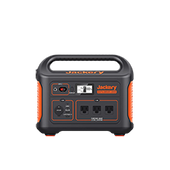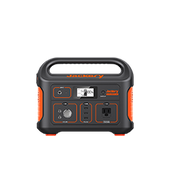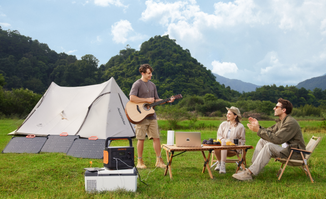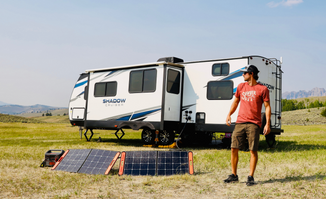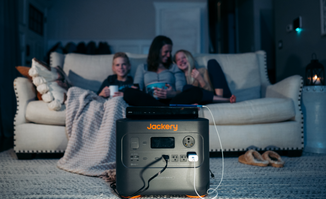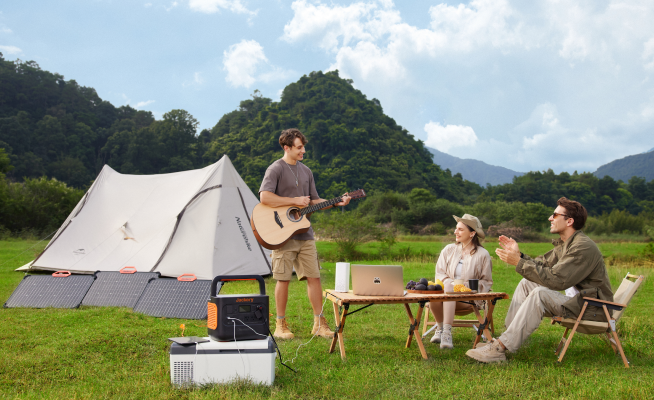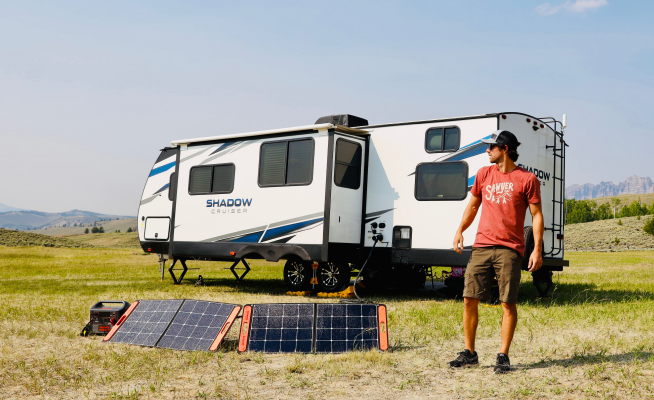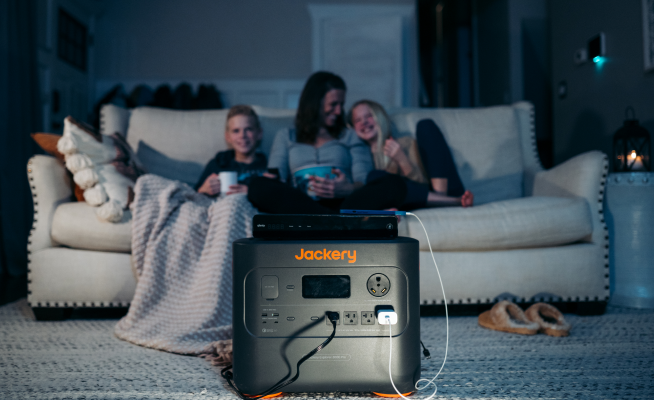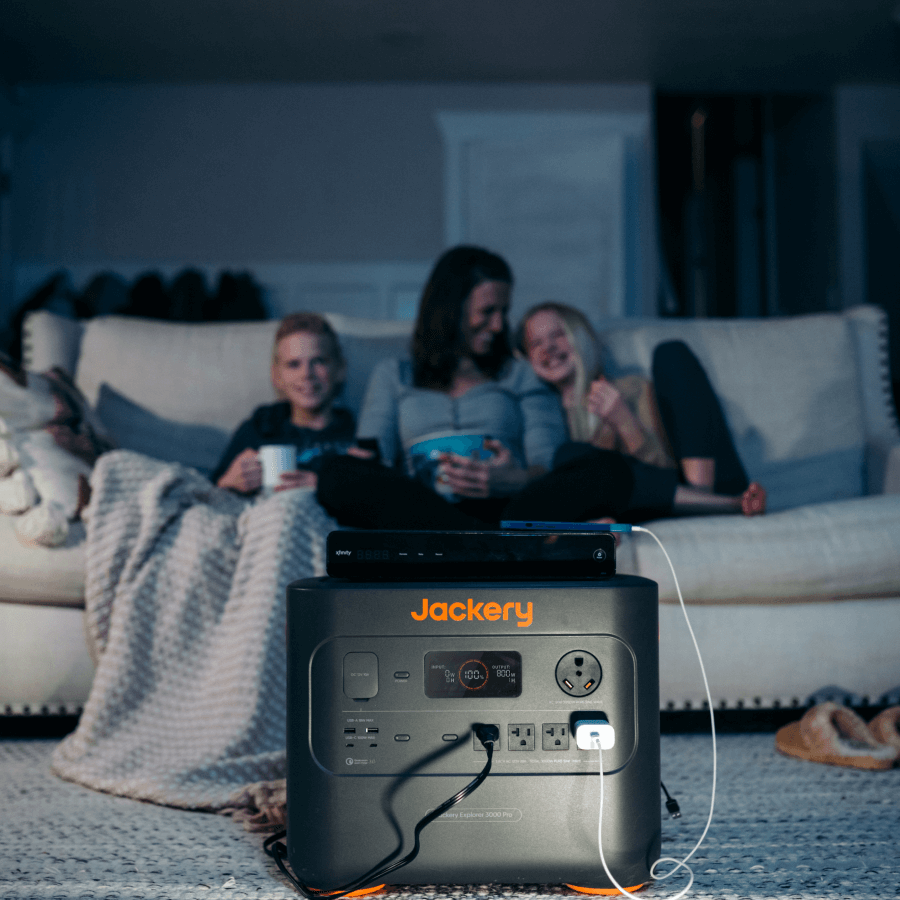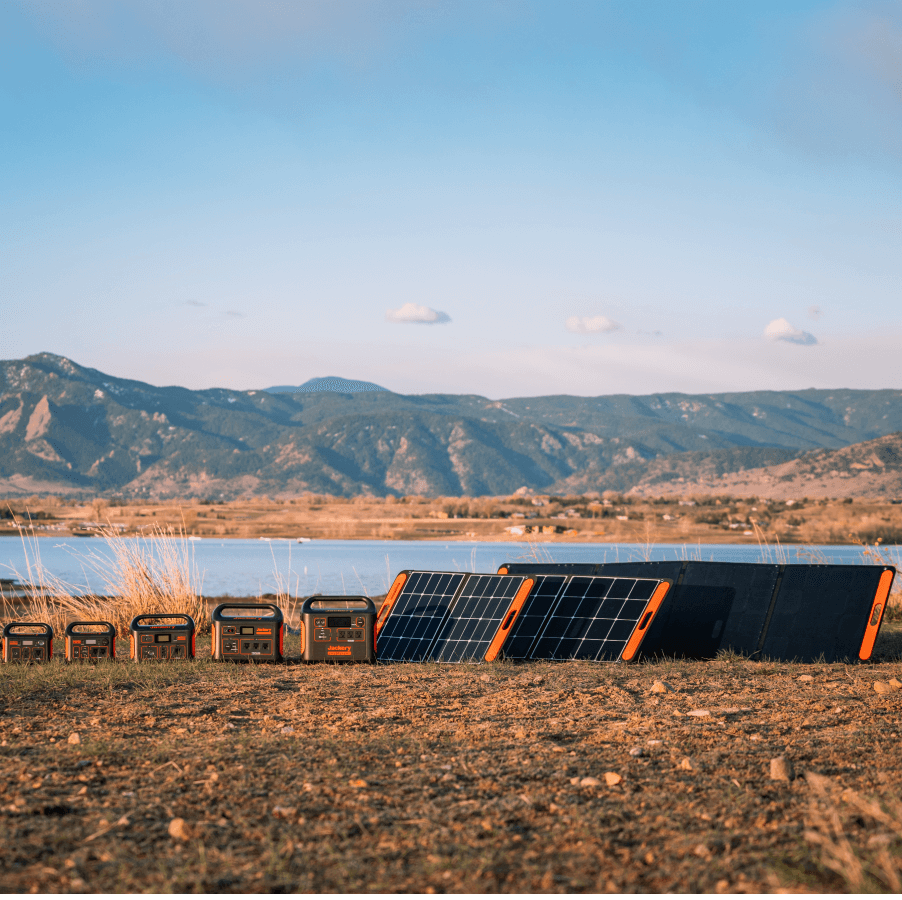What happens when the power goes out suddenly?
Your house is plunged into darkness, all your major appliances suddenly stop working, and comfort becomes chaos. More common incidents of power outages include unpredictable storms and long grid failures.
Therefore, power backup sources have become a necessity in this part of the world. An excellent portable power station is all you need to keep your home safe, comfortable, and peaceful.
Meet Jackery, a clean, modern, and efficient power solution for homeowners. It manufactures advanced emergency generators that deliver reassurance during the special time.
Why Do You Need an Emergency Generator for Home
Canadian winters are as beautiful as they are unpredictable. Snowstorms, freezing rain, and icy winds can strike without warning, leaving entire neighborhoods in the dark. Power outages during these extreme conditions can quickly turn dangerous, freezing water pipes, spoiling food, and leaving families without heat or communication.
An emergency generator is your lifeline during these challenging moments. It keeps essential devices running—like heaters to keep your home warm, refrigerators to preserve food, and communication tools to stay connected with loved ones or emergency services.
Whether you’re battling a snowstorm or a sudden cold snap, a reliable generator ensures you and your family stay safe, comfortable, and prepared for up to 72 hours or more.
Understanding Emergency Generators
An emergency generator for homes is like an electricity backup, providing power to the home when the main grid fails.
How Do Emergency Generators Work?
The generator needs motion to get started. This can come from a variety of sources—like a petrol engine, wind turbine, water flow, or even hand-cranking. For modern solar generators, the motion is replaced by energy stored in a battery, which was first charged by sunlight.
Inside the generator, there’s a key part called the rotor or armature. When this rotor spins (thanks to the mechanical energy), it moves within a magnetic field created by strong magnets or coils.
As the rotor spins, it disturbs the magnetic field, which forces electrons to move through wires. This movement of electrons is what we call electricity. Think of it like shaking a water hose—if you move it enough, the water (or, in this case, electrons) flows out. The electricity then flows through the generator’s outlets (like AC or DC ports) into the appliances or devices you need to power - such as lights, laptops, or fridges.
Fuel-Powered vs. Solar-Powered Generators
|
|
Gas Generator |
Solar Generator |
|
Initial and Long-Term Costs |
Lower initial cost but ongoing fuel and maintenance expenses. Fuel costs increase over time. |
Higher upfront costs but no fuel or major maintenance costs. Saves on electricity bills and is eligible for tax rebates. |
|
Portability |
Generally compact and does not require additional panels. |
Slightly larger when including solar panels. Some models are lightweight and portable. |
|
Maintenance |
Requires regular maintenance due to fuel residue, oil changes, and engine wear. |
Requires virtually no maintenance. Occasional panel cleaning for permanent installations. |
|
Indoor vs. Outdoor Usage |
Only for outdoor use due to toxic emissions. Must be 20 feet from the house. |
Safe for both indoor and outdoor use. Must be protected from liquids and extreme temperatures. |
|
Power Capacity |
It can provide more power overall, especially for heavy loads. |
Sufficient for home backup and portable needs. Expandable solutions are available for full home coverage. |
|
Reliability |
Prone to mechanical wear and tear. May fail during critical times. |
Highly reliable with no moving parts. Works whenever there is daylight, even on cloudy days. |
|
Environmental Impact |
Burns fossil fuels and produces harmful emissions and noise. |
No emissions, has silent operation, and uses clean, renewable solar energy. |
|
Long-Term Value |
Costs increase due to fuel and maintenance. Limited lifespan due to engine wear. |
Provides better ROI with free sunlight as fuel and fewer maintenance needs. Long-lasting performance. |
Which One Should You Choose?
- Gas Generators are a quick solution for high-power needs but come with noise, emissions, and ongoing costs.
- Solar Generators are cleaner, quieter, and more cost-effective over time. They’re ideal for homes, outdoor trips, and backup power with minimal effort and maximum reliability.
What to Consider in Choosing the Right Emergency Generator for Home
What to consider for your family emergency lifeline: Start by learning the differences between standby and portable power generators.
Portable Power Generators vs. Standby Power Generators
Here’s a clear and professional explanation of the differences between portable generators and standby generators as home emergency power solutions:
Portable Generators
A portable generator is a compact, mobile power solution designed to provide temporary electricity during outages. It converts mechanical energy into electrical energy, typically fueled by gasoline or propane.
When a power outage occurs, you’ll need to manually start the generator and connect your devices using extension cords or through a manual transfer switch installed by an electrician. While using extension cords is the more affordable option, it limits the number of devices you can power simultaneously.
Portable generators are budget-friendly, with entry-level models costing a few hundred dollars. However, for reliable home use, you’ll need a unit that produces thousands of watts, costing anywhere between $500 and $5,000. For instance, a 4,500-watt dual-fuel generator priced around $1,000 can power essential appliances like refrigerators, air conditioners, and computers during a short-term outage.
Portable generators are best suited for homeowners seeking an affordable, flexible backup power solution and are also ideal for camping or outdoor activities.
Standby Generators
A standby generator, also known as a whole-home generator, provides automatic power backup during an outage. Unlike portable generators, standby generators are permanently installed and connected to your home's natural gas supply or a dedicated fuel tank. When the power goes out, the generator’s sensors detect the disruption and automatically start up, ensuring seamless power restoration without any manual intervention.
Standby generators are significantly more powerful than portable options, ranging from 7,500 watts to over 48,000 watts. This enables them to power an entire home, including critical systems like central heating and cooling, kitchen appliances, sump pumps, and other essentials simultaneously.
While they require professional installation and cost between $5,000 and $25,000 or more, they offer unmatched convenience, reliability, and peace of mind. Standby generators are quieter and eliminate the hassle of handling extension cords or storing fuel. It is an excellent choice for long-term, worry-free backup power.
Assess Your Power Needs
Start by listing all essential appliances you want to power during an outage, such as:
- Refrigerators and freezers
- Heating and cooling systems (space heaters, window AC units, fans)
- Lights and electronics (TV, laptops, Wi-Fi routers)
- Sump pumps and medical devices
Each appliance has a specific wattage demand, often listed on its label. Use this to calculate your total power needs:
- Starting wattage: Higher power is needed to start devices like refrigerators and air conditioners.
- Running wattage: Continuous power is needed to keep the devices running.
Example: If your refrigerator uses 800 starting watts and 200 running watts, you’ll need a generator that can handle at least 800 watts initially. Tip: Opt for a generator that exceeds your total power requirement by at least 20% to account for surges.
Generator Sizes Based on Needs:
- Small generators (up to 3,000 watts): Powers lights, small appliances, and electronics.
- Medium generators (3,000-6,000 watts): Runs essentials like fridges, fans, and sump pumps.
- Large generators (7,000+ watts): Powers multiple large appliances, including HVAC systems.
Runtime and Fuel Efficiency
Look for generators with a longer runtime to ensure continuous operation during extended outages. A generator’s fuel efficiency determines how long it will run on a full tank:
Noise Levels
Generators can be noisy, especially in residential areas. Consider the decibel rating (dB) when selecting your unit:
- Portable Generators: Typically produce 65-80 dB, similar to a loud vacuum cleaner.
- Inverter Generators: Designed for quieter operation, around 50-60 dB, making them ideal for noise-sensitive environments.
- Standby Generators: Quieter overall, producing about 55-70 dB, depending on the brand and size.
Tip: If noise is a concern, opt for inverter models or generators with noise-reducing features like mufflers and sound enclosures.
Other requirements that need to be considered
- Maintenance
- Budget and Cost
- Safety Considerations
Jackery Solar Power Generators for Your Home Emergency Backup
When it comes to dependable emergency generators for homes, Jackery is the name to consider. Let us take a closer look at two of its lately rolled-out large-capacity models: Jackery Solar Generator 3000 Pro and Jackery Solar Generator 5000 Plus.
Jackery Solar Generator 5000 Plus
The Jackery Solar Generator 5000 Plus is designed for extended home power backup during outages. With its impressive 5kWh base capacity, you can power essential home devices like refrigerators, lights, and laptops for an entire day. What sets it apart is its expandable design—you can add Battery Packs to scale up to a colossal 60kWh capacity, providing up to two weeks of reliable backup power.

Powerful Dual Voltage Output (120V/240V)
Unlike most portable power stations, the 5000 Plus supports both 120V and 240V outputs, making it versatile enough to power heavy-duty appliances such as:
- Water pumps
- Ovens
- Electric dryers
- Air conditioners
- Electric vehicles (EVs)
This dual capability ensures that both everyday essentials and high-demand equipment can run seamlessly, making it a comprehensive emergency generator.
Lightning-Fast Charging with Multiple Options
With the Jackery Solar Generator 5000 Plus, you never have to worry about prolonged recharging times. Its cutting-edge system supports:
- AC charging (full recharge in just 1.7 hours)
- High-voltage solar charging at 4000W
- Low-voltage solar charging at 1200W
By connecting Jackery SolarSaga 500 panels (25% efficiency), you can harness clean, sustainable energy for continuous power during long outages.
0ms UPS Switchover – Seamless Power Backup
The built-in 0ms Uninterruptible Power Supply (UPS) ensures instant power transfer when an outage occurs. This zero-delay switchover is crucial for sensitive electronics such as:
-
Internet routers
- Desktop computers and servers
Your devices remain powered, with no disruption to daily life or safety.
Durable, Reliable, and Quiet
The next-gen LiFePO4 battery cells guarantee a lifespan of over 10 years (or 4000+ cycles to 70% capacity). Combined with advanced ChargeShield 2.0 technology, you get safe and efficient charging every time. Despite its powerhouse performance, the 5000 Plus operates at an ultra-quiet 30 dB, ensuring minimal noise while keeping your home powered.
Smart and User-Friendly Design
- Smart App Control: Monitor power usage and battery levels and manage settings remotely.
- Portability: Despite its size, the unit comes with wheels and a pull handle for easy movement.
- 5-Year Warranty: Backed by a 5-year warranty (with optional 2 extra years), ensuring long-term reliability.
Jackery Solar Generator 3000 Pro
The Jackery Solar Generator 3000 Pro delivers 3kWh of energy, making it a perfect solution for powering essential home devices during short to medium power outages. Its compact design makes it ideal for apartments, smaller homes, or as a secondary backup power source.

Multiple Output Ports for Flexible Use
Equipped with a variety of ports, the 3000 Pro can power and charge multiple devices simultaneously:
- 3 x AC Outputs (120V, 60Hz, 20A–25A): Suitable for appliances like refrigerators, TVs, and heaters.
- 2 x USB-C (100W) & 2 x USB-A (18W Quick Charge): Keep laptops, phones, and tablets running efficiently.
- Car Port (12V/10A): Supports car devices and emergency lighting.
This variety ensures that everything from small electronics to larger appliances can be powered seamlessly.
Ultra-Fast Charging in 2.4 Hours
The 3000 Pro stands out with its rapid recharge time:
- Full charge via AC Adapter in 2.4 hours
- Solar charging capabilities using Jackery SolarSaga panels for off-grid power
Its quick recharge time ensures you’re ready for the next outage without delay.
Advanced Battery Technology for Durability
With its Lithium-ion battery and advanced Battery Management System (BMS), the 3000 Pro guarantees:
- 2000+ charge cycles to 70%+ capacity, ensuring years of reliable use
- Protection against over-voltage, short circuits, and overheating
Even in extreme temperatures as low as -20°C (-4°F), the 3000 Pro delivers reliable performance, making it an excellent choice for Canadian winters.
Don’t Wait for the Next Storm to Hit
An emergency generator for home offers a more secure, comfortable life for Canadian households during power outages. Jackery Solar Generator 3000 Pro and Jackery Solar Generator 5000 Plus are among the innovative, endurable, and secure power solutions. Jackery comes into view and ensures you're well-prepared with features meant to handle the challenges of Canadian winters and everyday use.









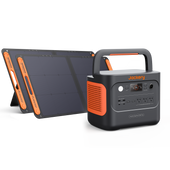

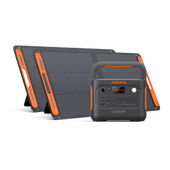
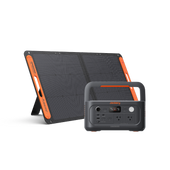
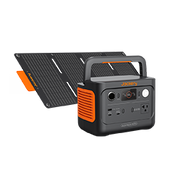
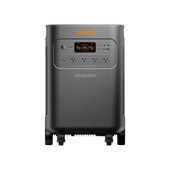
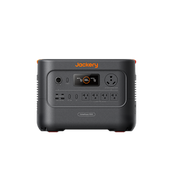
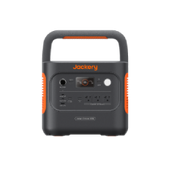
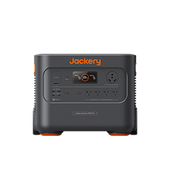
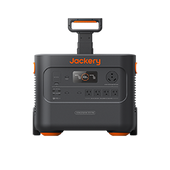

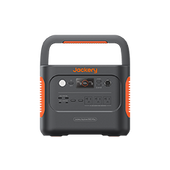
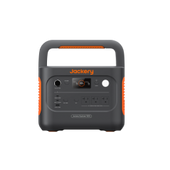
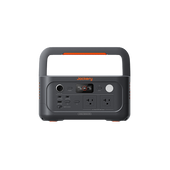

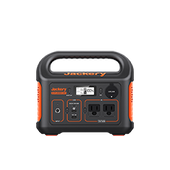
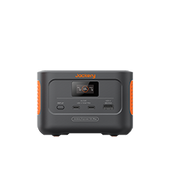
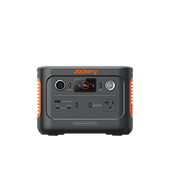
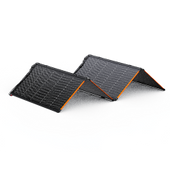
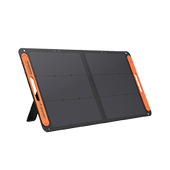


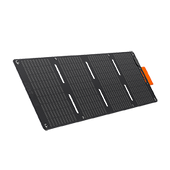
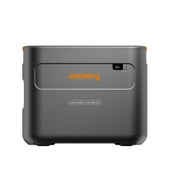
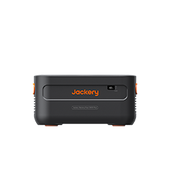
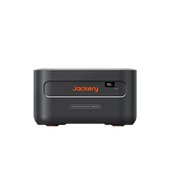
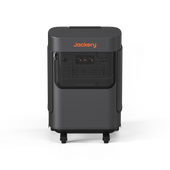
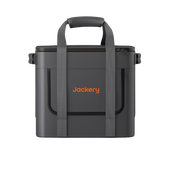
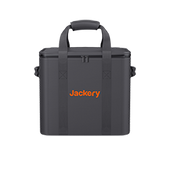
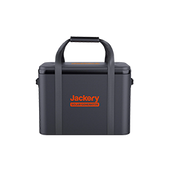
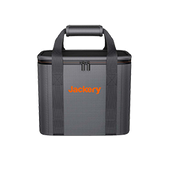
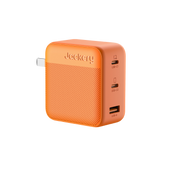
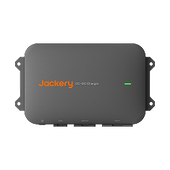
![[Add-on] Jackery Manual Transfer Switch for Explorer 5000 Plus](http://ca.jackery.com/cdn/shop/files/add-on-jackery-manual-transfer-switch-for-5000-plus-240V.webp?v=1757043692&width=170)
